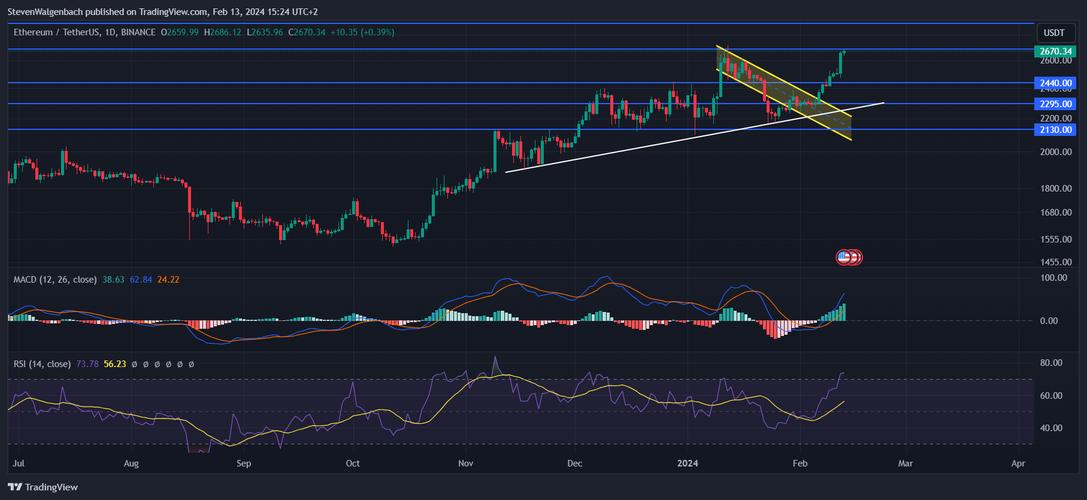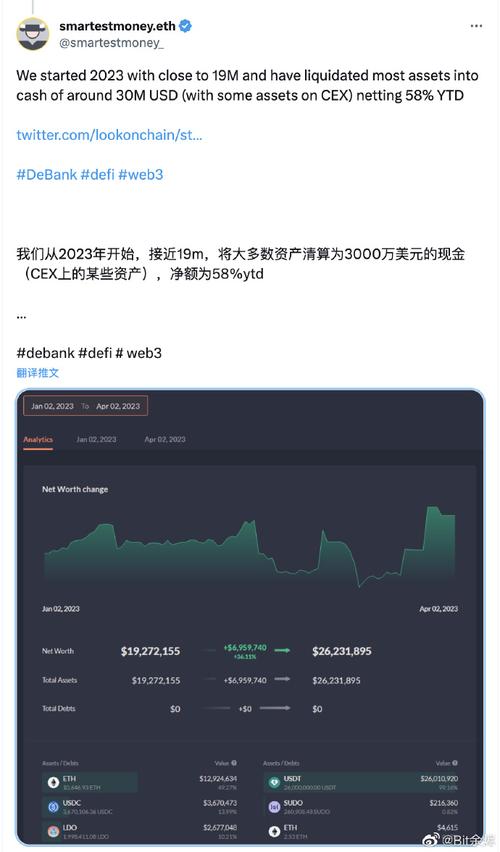
Understanding Binance Wrapped ETH: A Comprehensive Guide
Binance Wrapped ETH, often abbreviated as BETH, has emerged as a significant player in the cryptocurrency market. It is a token that represents Ethereum (ETH) on the Binance Smart Chain (BSC). If you’re looking to delve deeper into this intriguing digital asset, you’ve come to the right place. Let’s explore BETH from various angles, including its purpose, benefits, and how it compares to its parent asset, ETH.
What is Binance Wrapped ETH?
BETH is a token that allows users to trade ETH on the Binance Smart Chain. It is essentially a wrapped version of ETH, which means it is a token that represents the value of ETH but is built on a different blockchain. This allows for cross-chain interoperability and enables users to take advantage of the BSC’s lower transaction fees and faster block times.

Why Use Binance Wrapped ETH?
There are several reasons why you might consider using BETH over traditional ETH:
-
Lower Transaction Fees: BSC offers significantly lower transaction fees compared to Ethereum’s network. This makes BETH a more cost-effective option for users looking to engage in decentralized finance (DeFi) or other blockchain-based applications.
-
Speedier Transactions: BSC boasts faster block times, which means transactions are confirmed much quicker than on the Ethereum network. This is particularly beneficial for users who need to execute multiple transactions in a short period.
-
Interoperability: BETH allows users to interact with BSC-based applications and services, which may not be possible with traditional ETH. This opens up a world of opportunities for developers and users alike.

How Does BETH Compare to ETH?
While BETH is a derivative of ETH, there are some key differences between the two:
| Feature | Binance Wrapped ETH (BETH) | Ethereum (ETH) |
|---|---|---|
| Blockchain | Binance Smart Chain (BSC) | Ethereum |
| Transaction Fees | Lower | Higher |
| Block Time | Approx. 3 seconds | Approx. 14 seconds |
| Interoperability | High | Medium |
As you can see, BETH offers several advantages over ETH, particularly in terms of transaction fees and speed. However, it’s important to note that BETH is still a relatively new token, and its long-term viability remains to be seen.
How to Obtain Binance Wrapped ETH
There are several ways to obtain BETH:
-
Exchange: You can purchase BETH on various cryptocurrency exchanges that support BSC tokens. Some popular options include Binance, OKEx, and Huobi.
-
Staking: You can earn BETH by staking your ETH on the Binance Smart Chain. This involves locking up your ETH for a set period in exchange for BETH rewards.
-
Swap: You can swap your ETH for BETH using decentralized exchanges (DEXs) like PancakeSwap or SushiSwap.
Conclusion
Binance Wrapped ETH is an intriguing token that offers several benefits over its parent asset, Ethereum. With its lower transaction fees, faster block times, and interoperability, BETH is an attractive option for users looking to engage with the Binance Smart Chain ecosystem. However, as with any cryptocurrency, it’s important to do your research and understand the risks involved before investing.



